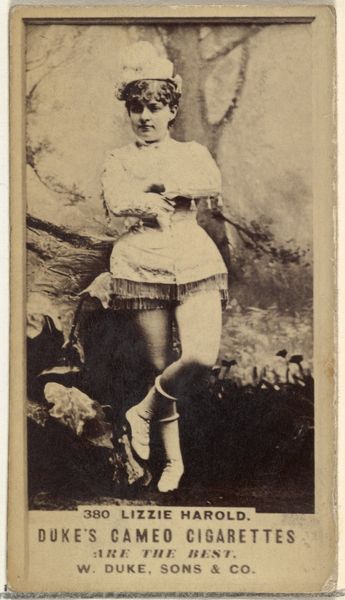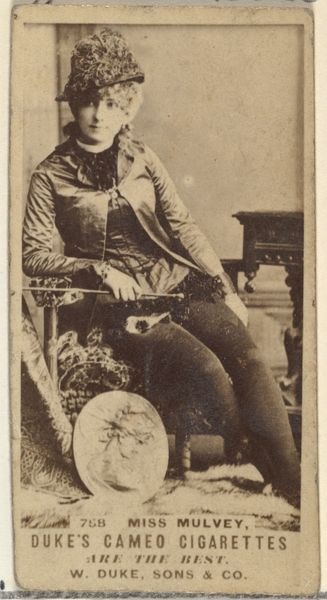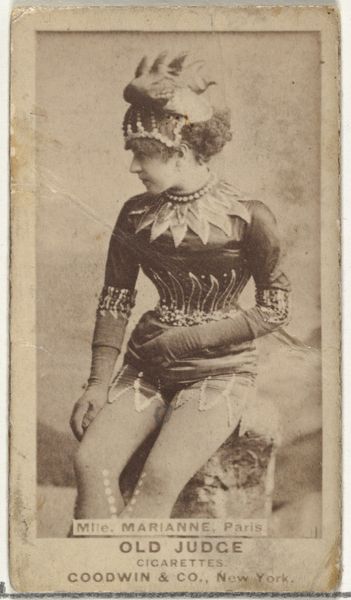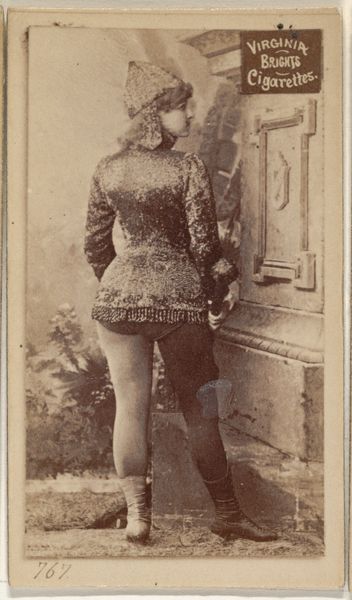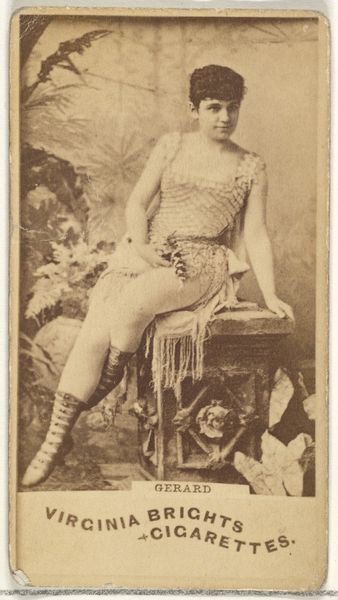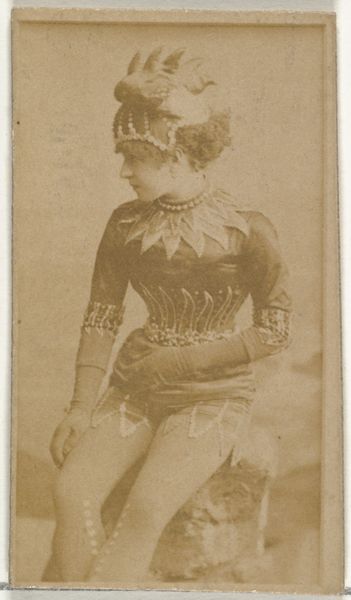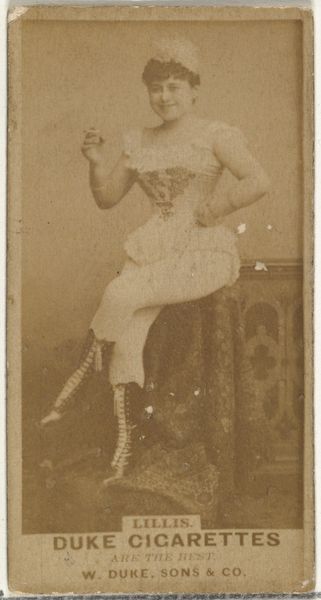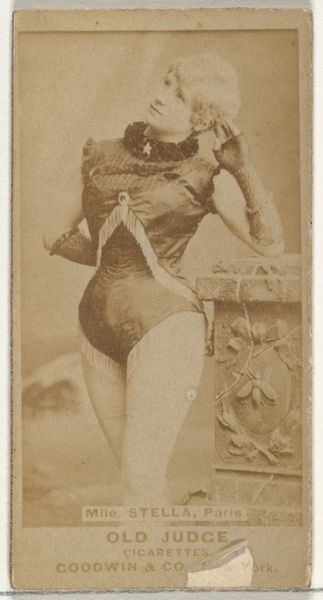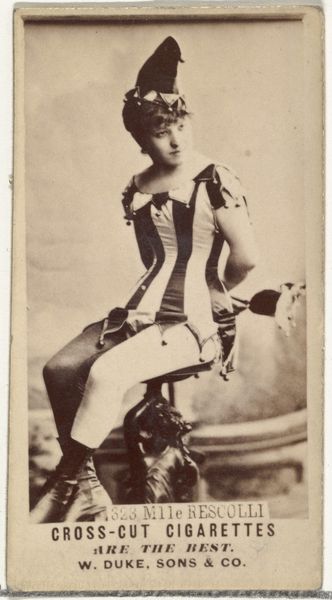
Mlle. Bie, Paris, from the Actors and Actresses series (N45, Type 1) for Virginia Brights Cigarettes 1885 - 1891
0:00
0:00
drawing, print, photography
#
portrait
#
drawing
# print
#
figuration
#
photography
#
19th century
#
genre-painting
Dimensions: Sheet: 2 3/4 x 1 3/8 in. (7 x 3.5 cm)
Copyright: Public Domain
Curator: Here we have an interesting example from the late 19th century: a photographic print of Mlle. Bie from Paris, taken as part of the "Actors and Actresses" series produced by Allen & Ginter for Virginia Brights Cigarettes. Editor: Immediately striking, isn’t it? There’s a theatrical flair, and the sepia tones evoke a sense of nostalgia and perhaps a touch of the risqué for its time. The cigarette advertisement pairing feels unexpectedly forthright. Curator: The theatricality comes from the conscious construction of image; the way she strikes a performative pose upon a stylized pillar reflects popular conventions of portraiture meant to elevate the sitter. The figure embodies transformation—don't you see the symbolic potency there? Editor: I’m more curious about the process of image production at play here. The deliberate material conditions reveal an interesting intersection of entertainment, consumer culture and industrial methods of mass production through photography and print media in the 1880s. It gives it context and changes its purpose, in my opinion. Curator: Well, let’s not forget that popular actresses signified aspiration, their images embodying ideals that women perhaps hoped to attain in some fashion. They occupied an almost mythic place within the cultural imaginary. That's especially clear, knowing this image came to be circulated with commercial packaging. It signals the dreams associated with modernity and leisure. Editor: You’re right about that interplay. Still, these cards functioned as miniature commodities themselves, cheap but desirable. The cigarette brand’s image became fused with those ideals and celebrity, shaping the culture and driving profit. Curator: Consider how many layers of social influence are embedded in one single card: advertising, celebrity worship, aspirations, visual codes borrowed from "high" art—all coalescing to generate an alluring fantasy. Editor: Precisely! What feels old-fashioned to us now actually highlights this crucial transition to mass production and a budding advertising industry. The materials speak to a social shift as much as Mlle. Bie’s image might speak to the audience today. Curator: I'm left pondering the echoes of cultural values and what continues to beguile and bind us in a never-ending cycle of images, ideals and self-fashioning. Editor: And for me, I see how understanding these overlooked or marginalized items gives us richer understandings of economic shifts, advertising and their impact on how identities were forged.
Comments
No comments
Be the first to comment and join the conversation on the ultimate creative platform.
